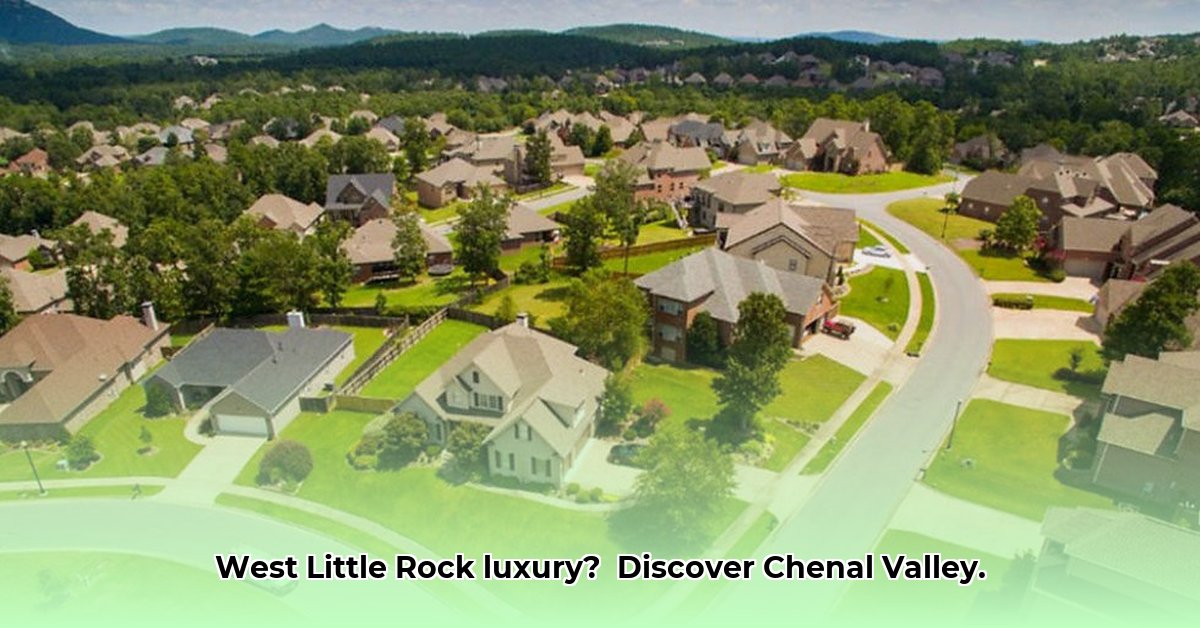
Chenal Valley: A West Little Rock Jewel
Chenal Valley, nestled in West Little Rock, Arkansas, enjoys a reputation for luxury and exclusivity. But beyond the stunning homes and manicured lawns lies a complex story of success, challenges, and the delicate balance between affluence and inclusivity. This case study explores the factors driving Chenal Valley's success, examines potential challenges, and offers insights into the future of this unique development, providing valuable lessons for upscale projects nationwide. How has Chenal Valley achieved such high property values, and what are the potential risks to its long-term viability?
Success Factors: Building a High-End Haven
Chenal Valley's success isn't accidental; it's a meticulously crafted narrative. The name itself evokes elegance and sophistication, a crucial element of its branding strategy. This branding, coupled with a highly desirable location, has attracted a high-income demographic. Recent census data reveals a median household income of $185,667, significantly surpassing the Arkansas state average. This affluent resident base forms the cornerstone of Chenal Valley's economic success. But is this high income demographic sustainable in the long term?
The development's mixed-use design is another key element. Residents can shop, dine, and work within the community, creating a self-contained and highly convenient ecosystem. This integrated approach significantly enhances the overall quality of life and attracts both high-net-worth individuals and businesses eager to serve this affluent market. This convenience directly contributes to the high property values and overall desirability of the development.
Challenges and Limitations: Navigating the Future of Luxury
While Chenal Valley’s present success is undeniable, the future presents significant challenges. Maintaining its exclusive image as it matures is a key concern. Will the high demand continue, or will market saturation lead to price reductions? This is a constant balancing act for luxury communities. What strategies can ensure stable, high property values in the long term - even during economic downturns?
Furthermore, the stark contrast between the affluence of Chenal Valley and the broader Little Rock area raises ethical questions about socioeconomic disparity. The development's economic success is heavily reliant on a specific income bracket, creating a potential vulnerability during economic downturns or shifts in the luxury real estate market. What are the long-term implications of this economic dependence?
Geographic limitations present another challenge. Expanding Chenal Valley requires careful consideration of neighboring communities and potential opposition to growth from existing residents. Any expansion will necessitate comprehensive planning and potentially delicate negotiations with surrounding areas.
Stakeholder Analysis: A Complex Interplay of Interests
Chenal Valley's success depends on the complex interplay of various stakeholder groups, each with its own short- and long-term goals.
Developers and Builders: Their immediate focus is maximizing profit and attracting high-net-worth buyers. Long-term goals involve sustainable community development and maintaining a positive community reputation.
Local Government: The city aims to increase tax revenue and attract businesses, while also working towards inclusive community development and improving the quality of life for all residents.
High-Income Residents: These residents prioritize maintaining property values and enjoying exclusive amenities. Their long-term concerns center on community stability and a positive social impact.
Lower-Income Residents (adjacent areas): These residents seek access to employment opportunities and affordable housing, hoping for integration into the broader community and equitable access to opportunities and amenities. How can Chenal Valley's development positively impact surrounding communities?
Risk Assessment: Mitigating Potential Threats
Chenal Valley faces several potential risks, each with varying likelihood and impact:
| Risk Factor | Likelihood | Impact | Mitigation Strategy |
|---|---|---|---|
| Economic Downturn | Medium | High | Diversify housing types, attract a broader range of businesses, invest in community infrastructure. |
| Market Saturation | Medium | Medium | Emphasize unique community features, maintain luxury branding, proactively anticipate changing market trends. |
| Regulatory Changes | Low | Medium | Maintain proactive communication with local government, anticipate and adapt to changing regulations. |
| Infrastructure Limitations | Low | Medium | Invest in ongoing infrastructure improvements, plan for future growth and expansion strategically. |
Conclusion: A Delicate Balance for Future Success
Chenal Valley's future depends on successfully navigating a complex web of economic, social, and regulatory challenges. Proactive engagement with local authorities, a commitment to sustainable development practices, and a nuanced understanding of the needs of all stakeholders are crucial for continued success. The development’s long-term viability and its contribution to the broader Little Rock community will depend on a concerted effort to balance luxury living with economic inclusivity and environmental responsibility. The case of Chenal Valley offers a valuable lens through which to study the successes and challenges of developing high-end communities, providing valuable lessons for similar projects across the country.